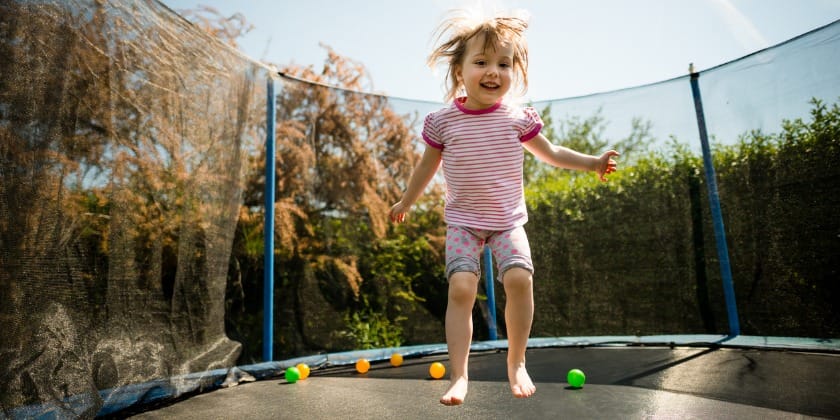10 simple hacks for kids' fitness

The end of summer marks the beginning of a new school year and the perfect time to kick-start a healthy routine for your family.
A recent study found that children tend to spend less time being active as they get older, and that overall only 30% of children meet the recommended daily minimums for physical activity. According to Australia’s Physical Activity and Sedentary Behaviour Guidelines, kids aged between two and five should get at least 180 minutes a day of physical activity, while those aged between five and 17 should get at least 60 minutes a day.
With one-quarter of Australian children overweight or obese, it’s also important to help kids make healthy food choices and to limit their screen time and sedentary behaviour.
However finding the time to shuttle the kids between sports and after school activities can be especially hard for busy parents. Over 32% of respondents surveyed for the Real Active Kids research suggest they limit the amount of sports their children can partake in simply because they have limited time to take their children to sporting activities.
Helping your kids to remain healthy and fit doesn’t have to be costly or time consuming either. Here are ten simple hacks to ensure your kids are off to a healthy start.
1. Activity hour
The first step is ensuring your kids get the recommended 60 to 180 minutes of exercise each day. If they’re not part of a sports team, consider simple, inexpensive ways to get them moving, such as family bike-riding or walking the dog after dinner.
2. Every step counts
With 63% of people suggesting that their children’s sports cost too much, incidental exercise is a cheap and easy way to increase physical activity. It’s as easy as parking a couple of blocks away from your destination and walking the extra distance with your kids!
3. Set the limits
According to the Real Active Kids Survey, 43.7% respondents cite competing with screens as a key barrier in encouraging their children to get outdoors more. It’s suggested that screen time should be limited to 120 minutes per day for kids aged between five and 17, or 60 minutes for children aged between two and five. You can restrict time on devices by using the parental controls as well as implementing an activity calendar in which your kids are allowed to pick an outdoor activity of their choice for the whole family to enjoy.
4. DIY in the kitchen
Encourage your kids to eat more healthily by involving them in cooking and meal prep. Why not try Taco Tuesday? Set up a healthy DIY taco bar with bowls of shredded baby spinach, diced cucumber, tomato, avocado and grated cheese for them to make their own. Add a sombrero to make it a party!
5. Master of disguise
Get imaginative with how you introduce new flavours and types of vegetables to your kids. While consistency is key, you can build up their palette over time by disguising foods they don’t like in the interim. For example, if your kids aren’t crazy about vegetables but love yoghurt, dips or cheese, opt for recipes like cheesy cauliflower or yoghurt-topped zucchini to help them get used to the taste.
6. Water works
With childhood obesity becoming an increasing concern in Australia, it’s important to teach your kids healthy eating habits from an early age. For example, limit sugary drinks to an occasional treat. Persuade your kids to drink water by placing it on the table at meal times and allow them to choose or decorate their own water bottle to encourage them to use it more.
7. Lunchtime prep
While we often take the time to pack our kids a healthy lunch, it could be getting traded for chocolate or chips. Allow your kids to be part of the planning so they can choose from a selection of healthy foods for their lunches. Giving them a little control can help guide you on what they’re likely to eat versus what they’re going to trade away.
8. Play time
Next time you buy your kids a gift, think outdoor games. Why not buy a cricket set, a soccer ball or a Frisbee? Not only will they be clocking up time moving, they’ll most likely be playing with others and getting some fresh air and vitamin D. Win, win, win!
9. Double duty
Get kids involved in household chores such as cleaning windows or washing the dog or car. In addition to teaching them how to be responsible, it also boosts their activity levels and limits time spent sitting.
10. Model behaviour
Kids learn their behaviour from their parents. If you’re active, they will follow your lead. Why not make Sunday a family fun day where you take turns to choose an activity such as bushwalking, cycling or swimming? Most Australian parents suggest spending time outdoors with their kids and taking them places helps encourage physical activity.

We understand your family’s health and wellbeing is your top priority, so we’ve made it ours too. Check out more about Real Life Insurance to better understand how it can help provide peace of mind.
20 Jun 2019